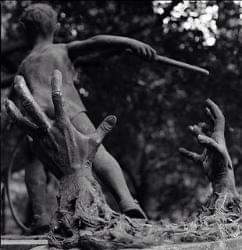Gustave Courbet, the realist artist behind the Origin of the World and two stunning large scale paintings in the Orsay was born on this day in 1819.
Gustave Courbet, the realist artist behind the Origin of the World and two stunning large scale paintings in the Orsay was born on this day in 1819.
Born to wealthy landowners in Ornans, he found his artistic talent at an early age. His first painting was a self portrait, today in the Carnavalet. Like many artists he would spend his days in the Louvre copying the masters. Preferring the Dutch, Spanish and Venetian paintings he was going to stand out from the other painters from early on.
Rejected over and over from the Salon for over ten years, he would keep marching to his own tune. After yet another rejection, with the funding of Alfred Bruyas he built his own pavilion for the 1855 Universal Exhibition displaying more than 40 paintings.
In 1870 he was appointed President of the General Surveillance of French Museums. With a team of people they protected the museums and art as the Prussians neared Paris. In his new role he expressed his displeasure of the Napoleon statue on the top of the Vendome Column.
He felt it “held no artistic value and represented the past imperial dynasty and its ideas of war”. As a member of the Commune he requested it be removed, the motion wasn’t adopted, but Courbet would take the matter into his own hands. Scheduled for May 5, Napoleon's birthday but delayed until May 16, a group of men with ropes tied it to the bronze emperor and gave it a few good pulls.
Falling to the ground covered with sand it broke in two and sent clay and dust darkening the sky. Courbet stood back and watched. He wanted it taken down, but not destroyed but it wouldn’t matter. Arrested and put on trial he would be convicted and sentenced to 6 months in prison.
Once released only few in the art world accepted him and the salon rejected him again. With fellow artists they created their own, the Salon des Refuses in 1873. That same year President Mac Mahon passed a law that Courbet should pay for the new Column. To pay the 320,000 francs his paintings were taken and sold and he slipped into financial ruin.












Comments
Post a Comment